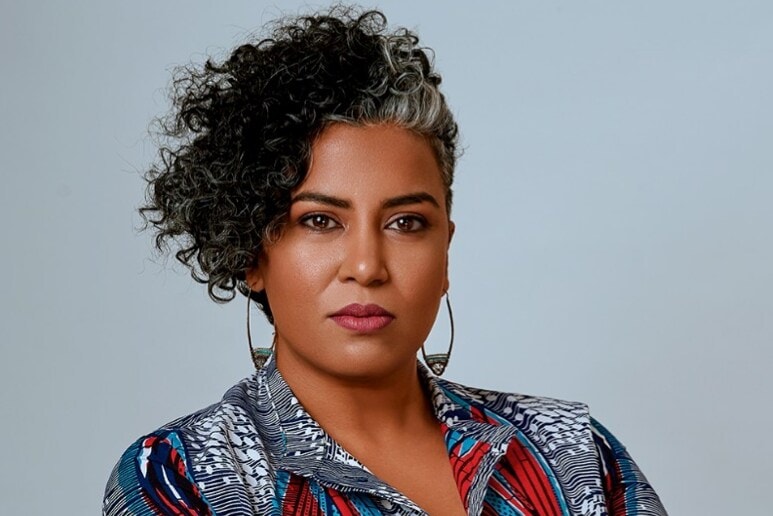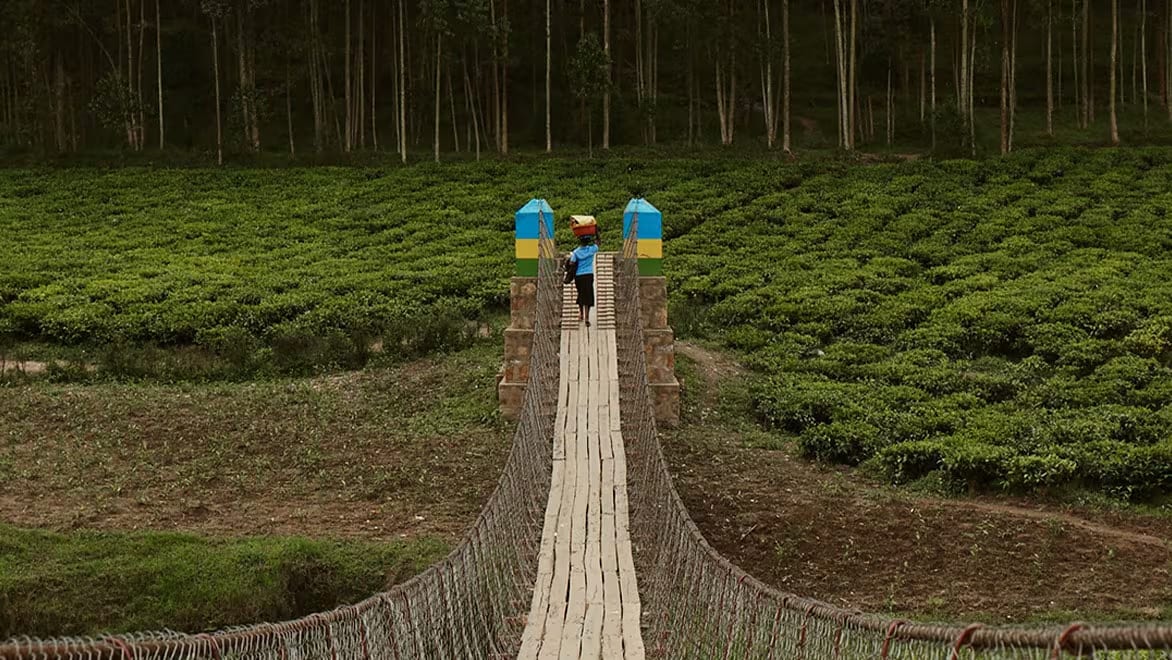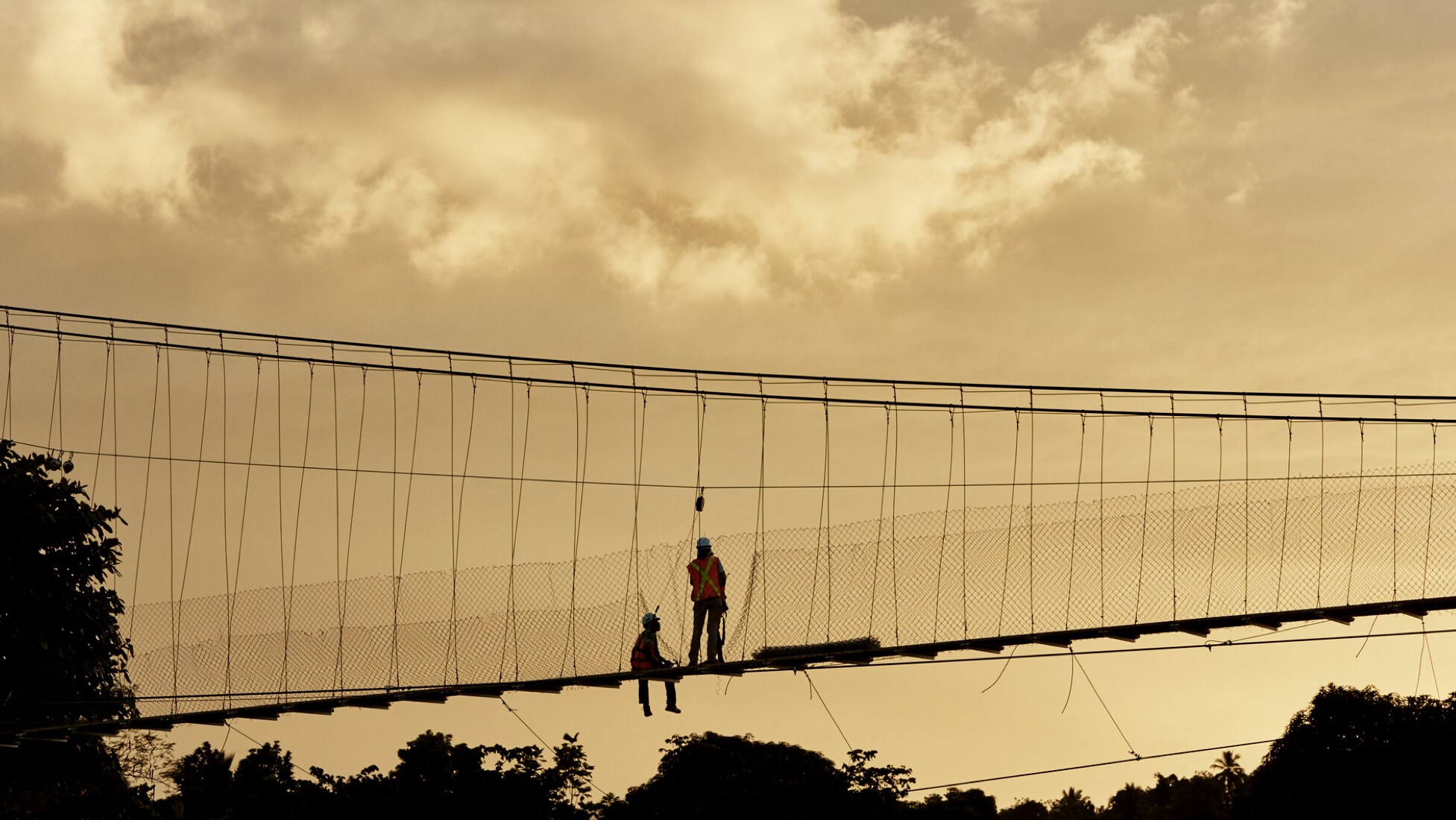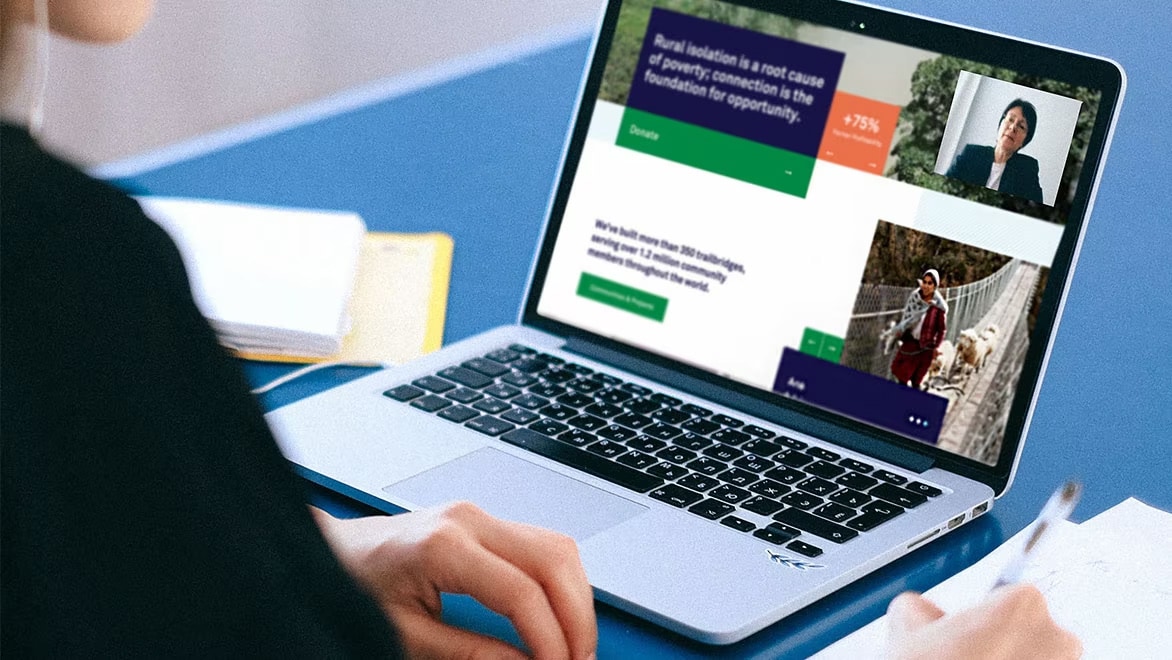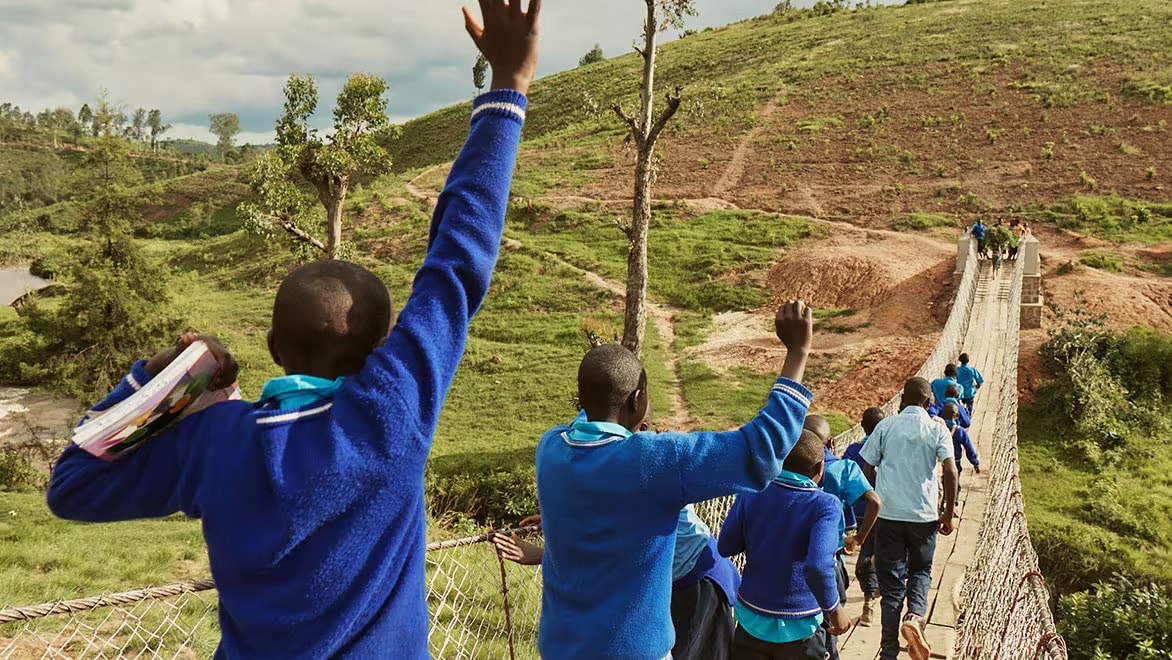A pro bono team of Autodesk employees helped Bridges to Prosperity bring its site visit program online during the COVID-19 pandemic, creating new avenues to engage partners in connecting rural communities with trailbridges.
— Nivi Sharma, CEO, Bridges to Prosperity
Image courtesy of Bridges to Prosperity
Lack of transportation infrastructure is a root cause of poverty for over a billion people worldwide. Bridges to Prosperity (B2P) is a US-based nonprofit that builds trailbridges to connect rural communities to essential services. Its 380+ bridges in 21 countries have connected an estimated 1.3 million people to healthcare, education, and employment since 2001.
Alissa Davis, Director of Business Development, B2P
Corporate partnerships are a key driver of B2P’s long-term impact. In the past, corporate partners could bring employees to B2P’s field sites for education, leadership development, and team building.
When the COVID-19 pandemic brought international travel to a halt, B2P was faced with the challenge of rapidly transitioning its site visit program to a virtual format. “Our traditional corporate engagement program was very travel- and experience-based,” says Alissa Davis, B2P’s Director of Business Development. “We had to find a way to maintain that emotional connection with partners, but virtually.”
Image courtesy of Bridges to Prosperity
The Autodesk Foundation, which began funding B2P as part of its Health and Resilience portfolio in early 2020, assembled a pro bono consulting team of eight Autodesk employees. The team brings expertise across marketing, engineering, and sales, to help B2P develop new online capacities to strengthen future corporate partnerships.
“The Autodesk pro bono team brought creativity and innovation to the project, helping us to see opportunity in the challenges the pandemic had presented,” says Nivi Sharma, CEO of B2P. After conducting market and product research, the team proposed a virtual build program that combined live streaming of the build site with custom webinars to educate partners about B2P’s work and to strengthen employees’ connection to their company’s corporate social responsibility programs.
The pro bono consulting team then assisted B2P with the technical challenge of learning new software and platforms to engage corporate partners in bridge builds occurring thousands of miles away in isolated communities. B2P’s leadership quickly realized that this project would serve the organization’s growth well beyond the COVID pandemic.
B2P hoped to draw 100 attendees to its redesigned webinar series. The first call drew over 400 individuals, leveling out to an average of 300 attendees for the remainder of the first series.
The new virtual site visit program not only maintained corporate partner programs during the pandemic, but created a whole new platform to expand engagement opportunities with government partners, potential new donors, and in-country staff going forward.
B2P also uses the webinars to train in-country staff and hired workers who are unfamiliar with the construction process. “Many times, our local staff and hired workers have not participated in construction before, so they can get a sense of the whole process before they put boots and gloves on,” says Davis.
Image courtesy of Bridges to Prosperity
The webinars piloted with the help of Autodesk employees, “are now a core part of our work,” says Davis. “When applying for foundation funding, you’re oftentimes restricted by the word count of a proposal,” she says. “Having these tools at the ready in a due diligence process brings the words from the proposal to life, which is key.”
Building a coalition of engaged and informed supporters is foundational to B2P’s vision to connect over 2 million more rural residents in the next five years while catalyzing government programs to scale the impact of bridge-building efforts. B2P’s ultimate aim is to help end isolation-based poverty by the year 2070.
